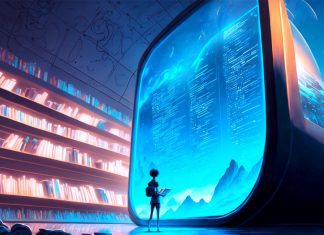The hero’s journey, as conceptualized by Joseph Campbell, offers an extraordinary framework for educators to teach character development in literature. This timeless narrative structure is a universal pattern that appears in stories from different cultures and epochs. By employing this journey as a pedagogical tool, you can significantly enhance students’ comprehension of character evolution and its pivotal role in storytelling. Let’s figure out how to do this.
Understanding the Concept
Before delving into its educational applications, let’s understand what is the hero’s journey and grasp its basic structure components. This archetypal journey includes several stages, like the call to adventure, the supreme ordeal or initiation, unification or transformation, and the return. Each phase represents several steps in the protagonist’s development, offering rich opportunities for literary exploration and analysis.
Implementing the Journey in the Classroom
The classroom is the perfect stage to bring the hero’s journey to life, transforming abstract concepts into tangible learning experiences for students. Through a blend of analysis, creativity, and reflection, you can properly guide learners in exploring the intricacies of character development in literature.
- Identifying the stages: Begin by engaging them in identifying these stages in various literary works. This exercise not only introduces them to the concept but also highlights its prevalence across different narratives.
- Character evolution analysis: Foster in-depth analysis of how characters evolve at each stage of their journey. This can be facilitated through essay assignments, class discussions, or presentations focusing on the protagonist’s decisions, emotional growth, and transformations.
- Creative application: Encourage students to apply this framework creatively by writing their own stories or reimagining existing stories through the lens of the hero’s journey. This helps cement their understanding of the structure and encourages innovative thinking about character development.
Following these recommendations, you’ll create a dynamic environment where literature becomes a tool for discovery and insight. Students not only learn about the stages of the hero’s journey but also how these stages mirror the complexities of human growth and experience.
Comparing and Contrasting Different Heroes
A comparative analysis of various heroes’ journeys across genres and cultures is a compelling approach to deepening students’ understanding. This can reveal how different contexts and authors approach character evolution, thereby enriching learners’ literary perspectives.
Paying Attention to the Supporting Characters
The journey of a main hero is often influenced by his or her interactions with supporting characters. The analysis of mentors, antagonists, and sidekicks can provide insights into how these figures aid or hinder the protagonist’s development, delivering a more holistic understanding of the narrative.
Exploring Non-Traditional Contexts
Exploring the hero’s journey in modern media like films or graphic novels can resonate with students more familiar with these mediums. This way, you’ll keep the classroom content both relevant and engaging while demonstrating the concept’s enduring relevance in contemporary storytelling.
Encouraging Empathy and Personal Growth
The hero’s journey, with its focus on personal challenges and transformation, is an excellent vehicle for teaching empathy. Discussing characters’ internal conflicts and triumphs allows students to relate to and learn from different perspectives. It also presents an opportunity for them to reflect on their journeys and developments, making literature a more relatable and introspective medium.
Leveraging Interdisciplinary Approaches
Integrating the hero’s journey with subjects like history, psychology, and cultural studies can provide a richer educational experience. For instance, exploring the historical context of a story can provide deeper insight into the protagonist’s actions and challenges. Psychology can help students grasp the internal struggles of characters, while cultural studies can illuminate how different societies view the concept of a hero.
Incorporating Multimedia and Technology
Utilizing multimedia resources such as film adaptations, online discussions, and interactive digital storytelling tools can further enhance the learning experience. This is how you can cater to different learning styles and bring a fresh approach to studying literature.
Evaluating Character Development
Finally, developing assessment strategies that focus on learners’ understanding of character evolution is crucial. You may suggest implementing creative projects, writing analytical essays, or creating presentations where students articulate their insights into character growth and its significance in the narrative arc.
Bringing It All Together
Employing the hero’s journey to teach character evolution in literature not only makes learning more engaging but also provides students with a more profound understanding of storytelling and the human experience. Through this approach, you’ll create an enriching, thought-provoking, and empathetic learning environment, preparing learners to be insightful readers and thinkers in their future endeavours.









